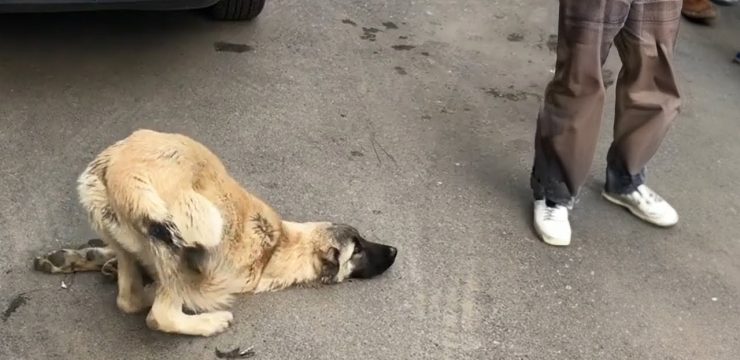In recent years, a growing number of doctors have started encouraging parents to preserve their child’s baby teeth. While most people may consider a lost tooth as just a childhood milestone or something to leave for the Tooth Fairy, emerging science suggests these tiny treasures could hold lifesaving potential in the future—especially if a child later faces a life-threatening illness.

One heartbreaking yet ultimately hopeful example comes from the story of Jenson Wright. Back in 2016, Jenson was just seven years old when he received devastating news: he had leukemia, and the disease had spread aggressively, taking over 65% of his young body. This wasn’t his first encounter with cancer either—at only four years old, Jenson had already battled lymphoma and leukemia. After two intense rounds of chemotherapy had failed, his parents were rapidly losing hope. In a Facebook post shared by his mother, Carolyn, she described how the disease tore through his body “like a wildfire, so rapid, we feared the outcome would be every parent’s nightmare.”
Just when it seemed like there was no light at the end of the tunnel, a miracle occurred. A mother in Texas, who had stored her newborn’s umbilical cord for future medical use, unknowingly gave Jenson a second chance at life. This generous donation of umbilical cord blood, rich in stem cells, became the key to Jenson’s recovery. As Carolyn wrote, “A mother in Texas gave the gift of a future to Jenson the day her child was born. A selfless act by one parent to another.” Only five days after the transplant, the new, healthy stem cells began attacking and eliminating the cancerous cells inside Jenson. “What was no longer needed by one child, gave life to another,” Carolyn added, describing the profound impact of the transplant.
By 2019, Jenson was declared cancer-free. According to a follow-up post from his mother, doctors confirmed that he no longer needed clinic visits. Today, he is a thriving 16-year-old high school student, enjoying the healthy life that once seemed out of reach. His journey stands as a powerful reminder of how something so small, like an umbilical cord or even a baby tooth, can contain the power to heal.
This leads to the next chapter in regenerative medicine—stem cells found in baby teeth. Researchers are now investigating the medical potential of dental pulp stem cell banking. The concept is relatively simple but profoundly impactful: instead of discarding a child’s baby teeth, parents can choose to preserve them with the hope that they may one day help treat serious illnesses.
Baby teeth contain mesenchymal stem cells (MSCs) within their dental pulp. These cells are incredibly versatile and have the potential to become various types of tissues, including bone, muscle, cartilage, and even nerve tissue. The Mayo Clinic describes stem cells as special cells that have the ability to self-renew and differentiate into other kinds of cells—like brain cells, heart muscle cells, and more. Essentially, they are the body’s building blocks, capable of repairing and regenerating damaged tissues or organs.
Unlike embryonic stem cells, which are often met with ethical concerns, or bone marrow stem cells, which require invasive harvesting procedures, dental stem cells can be collected non-invasively. The process involves storing the tooth under special conditions that keep the cells viable for potential medical use in the future.
This practice, while still in its early stages, is gaining interest among parents as a form of biological insurance—a way to safeguard their child’s health down the road. A report published in the National Library of Medicine even stated that “stem cells from human exfoliated deciduous teeth (SHEDs) are the best candidates for personal cell banking,” noting that the method is minimally invasive and utilizes cells from the donor’s own body, eliminating the risk of immune rejection during future treatments.
Of course, there are caveats. While the science behind dental pulp stem cells is promising, practical medical treatments using these cells are still under development. Many of the potential therapies are years away from becoming mainstream. Moreover, private stem cell banks typically charge collection and storage fees, which can accumulate significantly over time. Some families may feel that the cost is justified by the peace of mind it brings, while others may question whether the investment is worthwhile given the current limitations of the science.
Public stem cell banks, such as those that store umbilical cord blood, offer more immediate and proven medical benefits and are already used in treatments for a variety of diseases. In that regard, some parents may choose to invest in established medical options instead of banking on a futuristic, experimental possibility.
Still, the idea of saving a simple baby tooth for potential medical breakthroughs is undeniably appealing. It represents hope, possibility, and the forward momentum of medical science. As researchers continue to make strides in stem cell therapy, the idea of healing one’s own body using cells from childhood becomes less of a fantasy and more of a tangible opportunity.
So, what do you think about these revolutionary findings? Would you consider investing in stem cell preservation as a form of health insurance for your child—or even yourself? We’d love to hear your thoughts on this cutting-edge topic. Share this story with others and let’s open up the conversation about how something as small as a baby tooth could one day play a big role in saving lives.





